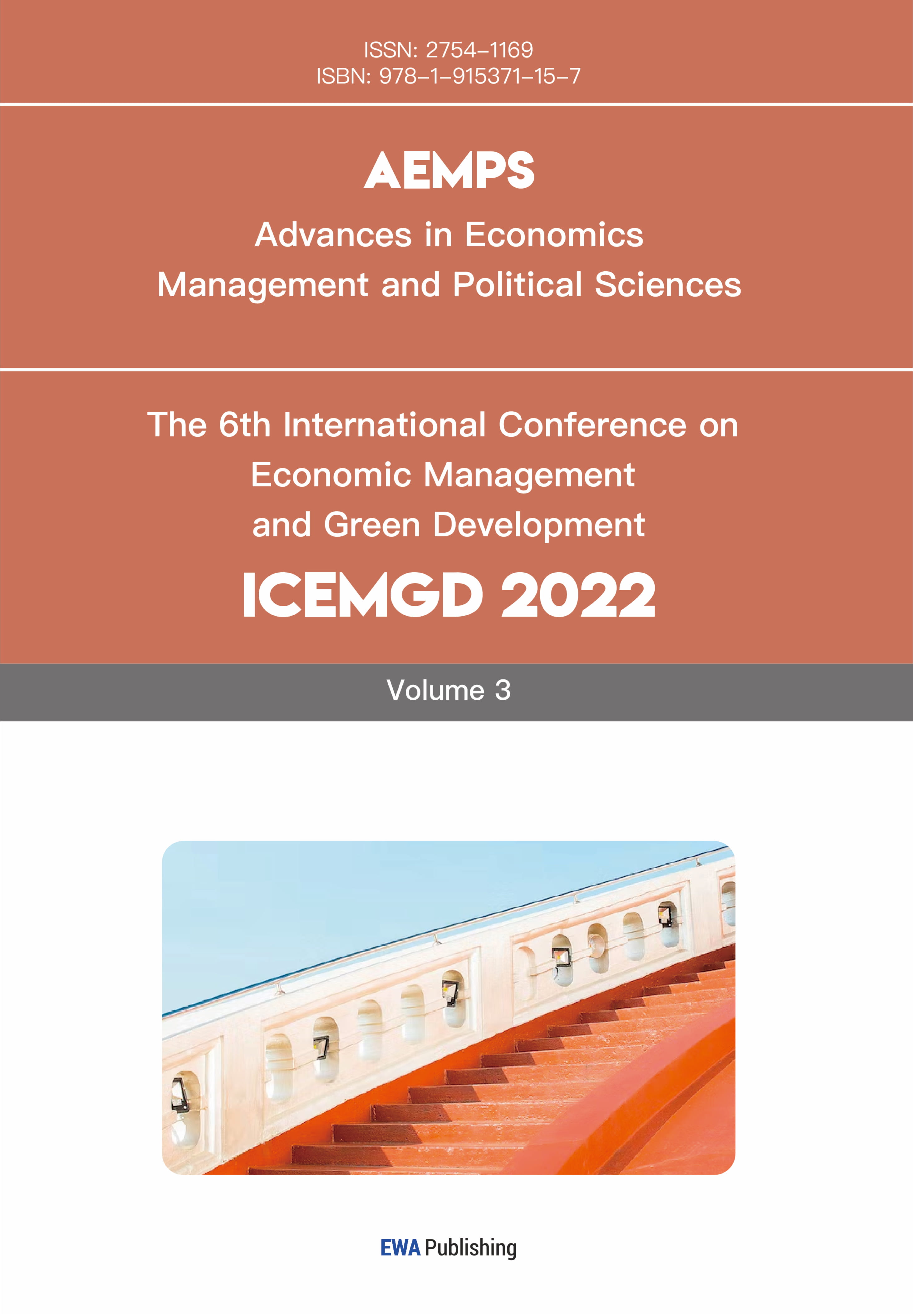References
[1]. NUNES, R. (2025). The Efficient Market Hypothesis as an Extension of Neoclassical Theory: A Theoretical and Empirical Critique. Journal of Economics, Finance and Accounting Studies, 7(4), 117-134.
[2]. Zahera, S. A., & Bansal, R. (2018). Do investors exhibit behavioral biases in investment decision making? A systematic review. Qualitative Research in Financial Markets, 10(2), 210-251.
[3]. Daniel, K., & Hirshleifer, D. (2015). Overconfident investors, predictable returns, and excessive trading. Journal of Economic Perspectives, 29(4), 61-88.
[4]. Fong, W. M. (2014). The lottery mindset: Investors, gambling and the stock market. Springer.
[5]. Adebambo, B. N., & Yan, X. (2018). Investor overconfidence, firm valuation, and corporate decisions. Management Science, 64(11), 5349-5369.
[6]. Akkaya, M. (2021). Behavioral portfolio theory. In Applying particle swarm optimization: new solutions and cases for optimized portfolios (pp. 29-48). Cham: Springer International Publishing.
[7]. Jäälinoja, J. (2025). Exploring Home Bias among Finnish Retail Investors: Behavioural and Demographic Insights.
[8]. Nguyen, A. P. N. (2024). Individual Sentiments and Collective Decisions: Cryptocurrencies as a prism for the wider market (Doctoral dissertation, Dublin City University).
[9]. Del Vicario, M., Scala, A., Caldarelli, G., Stanley, H. E., & Quattrociocchi, W. (2017). Modeling confirmation bias and polarization. Scientific reports, 7(1), 40391.
[10]. Blumenthal-Barby, J. S., & Krieger, H. (2015). Cognitive biases and heuristics in medical decision making: a critical review using a systematic search strategy. Medical decision making, 35(4), 539-557.
[11]. Haselton, M. G., Bryant, G. A., Wilke, A., Frederick, D. A., Galperin, A., Frankenhuis, W. E., & Moore, T. (2009). Adaptive rationality: An evolutionary perspective on cognitive bias. Social Cognition, 27(5), 733-763.
[12]. Campbell, S. D., & Sharpe, S. A. (2009). Anchoring bias in consensus forecasts and its effect on market prices. Journal of Financial and Quantitative Analysis, 44(2), 369-390.
[13]. Cen, L., Hilary, G., & Wei, K. J. (2013). The role of anchoring bias in the equity market: Evidence from analysts’ earnings forecasts and stock returns. Journal of Financial and Quantitative Analysis, 48(1), 47-76.
[14]. Rook, D. (2013). Paying Attention (Due) to Memory Structure: Rethinking Expertise in Financial Cognition. Available at SSRN 2336480.
[15]. Ludwig, A., & Zimper, A. (2013). A decision-theoretic model of asset-price underreaction and overreaction to dividend news. Annals of Finance, 9(4), 625-665.
[16]. Westermann, F., & Schunk, D. (2022). Rational expectations vs. behavioral biases: An empirical analysis of trading variability in international capital markets. Journal of Business and Economic Options, 5(4), 35-42.
[17]. Crompton, J. L. (2016). Implications of prospect theory for the pricing of leisure services. Leisure Sciences, 38(4), 315-337.
[18]. Han, J. (2010). A Model of Self-Reinforcing Financial Fads. Available at SSRN 1508888.
[19]. Konttinen, S. (2025). Testing for Herding in the Finnish Equity Market: A CSSD and CSAD Approach During Periods of Uncertainty.
[20]. Nelson, S. C., & Katzenstein, P. J. (2014). Uncertainty, risk, and the financial crisis of 2008. International organization, 68(2), 361-392.
[21]. Spyrou, S. (2013). Herding in financial markets: a review of the literature. Review of Behavioral Finance, 5(2), 175-194.
[22]. De Bondt, W. F., & Thaler, R. (1985). Does the stock market overreact?. The Journal of finance, 40(3), 793-805.
[23]. Jegadeesh, N., & Titman, S. (1993). Returns to buying winners and selling losers: Implications for stock market efficiency. The Journal of finance, 48(1), 65-91.
[24]. Chuang, W. I., & Lee, B. S. (2006). An empirical evaluation of the overconfidence hypothesis. Journal of Banking & Finance, 30(9), 2489-2515.
[25]. Cakici, N., Fabozzi, F. J., & Tan, S. (2013). Size, value, and momentum in emerging market stock returns. Emerging Markets Review, 16, 46-65.
[26]. Guo, H. (2006). Time-varying risk premia and the cross section of stock returns. Journal of Banking & Finance, 30(7), 2087-2107.
[27]. Nevin, J. A., Craig, A. R., Cunningham, P. J., Podlesnik, C. A., Shahan, T. A., & Sweeney, M. M. (2017). Quantitative models of persistence and relapse from the perspective of behavioral momentum theory: Fits and misfits. Behavioural processes, 141, 92-99.
[28]. Gromb, D., & Vayanos, D. (2010). Limits of arbitrage. Annu. Rev. Financ. Econ., 2(1), 251-275.
[29]. Daniel, K. D., Hirshleifer, D., & Subrahmanyam, A. (2001). Overconfidence, arbitrage, and equilibrium asset pricing. The Journal of Finance, 56(3), 921-965.
[30]. Verma, R., & Verma, P. (2007). Noise trading and stock market volatility. Journal of Multinational Financial Management, 17(3), 231-243.
[31]. Monyebodi, K. J. (2023). Investment Styles and Monetary Policy Shocks: Evidence from Advanced and Emerging Economies.
[32]. Malkiel, B. G. (2011, October). The efficient-market hypothesis and the financial crisis. In Rethinking finance: perspectives on the crisis (Proceedings of a conference). Russel Sage Foundation.
[33]. Bhanu, B. K. (2023). Behavioral finance and stock market anomalies: Exploring psychological factors influencing investment decisions. Commer. Econ. Manag, 23.



